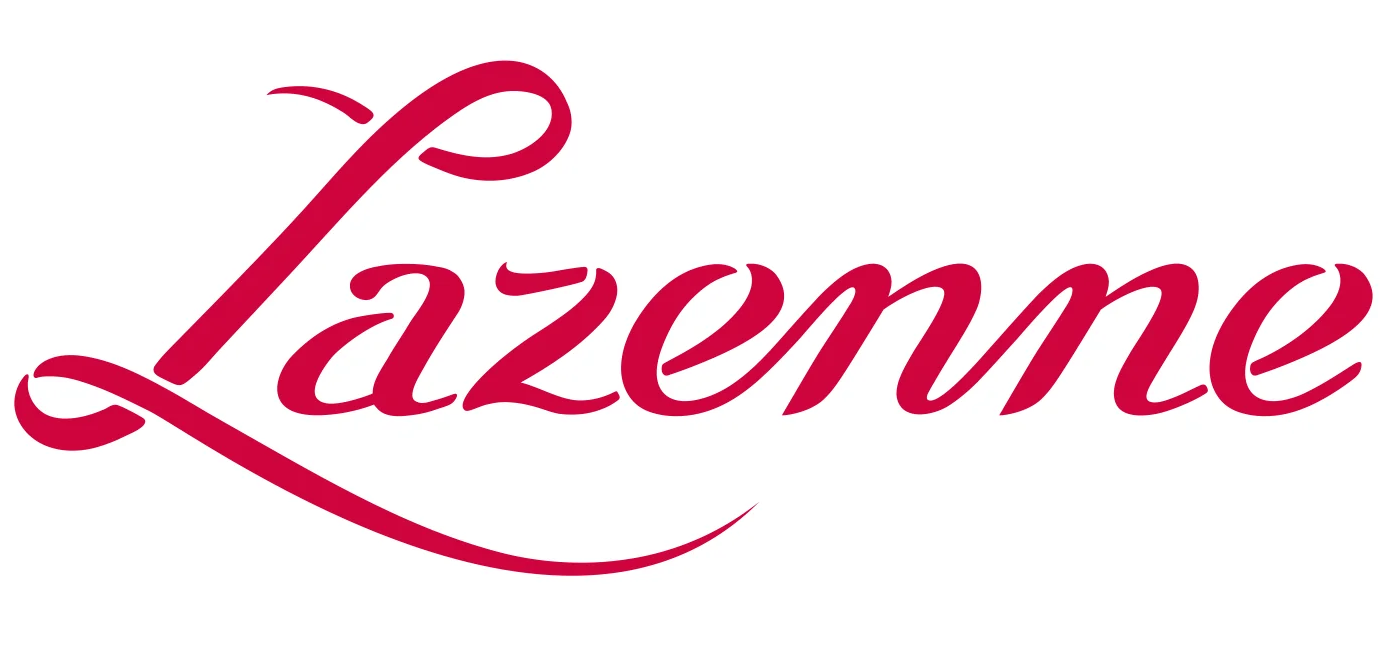
The World's Top 10 Most Under Rated Wine Regions
With the world of wine being such a vast place, it's perhaps inevitable that some regions are overlooked. Add the whims of fashion to the mix, and the flavour-of-the-year is often an unusual mixture of niche styles, emerging regions and old classics. Interestingly, under-rated regions are usually perceived to be small in stature, or new and unproven, but it's often large, classic regions that don't generate the excitement and press that they perhaps should. Here, wines are made in a similar style year by year, and wine-makers have had an opportunity to perfect their craft, often passing down a way of working through several generations to arrive at this point.
As we draw towards the end of an exciting 2018 in the world of wine, we're going to have a look at what we consider to be the 10 most under-rated regions in the world of wine today. Some of them may surprise you!

Chianti Classico
We're huge fans of Chianti Classico, one of Tuscany's top wine regions. Historically Chianti was one of the first demarcated wine regions in the world, they may even argue that they were the first, and enjoyed all across Europe from the 18th century onwards. However, with commercial success came the problem that demand was far greater than supply. The result was that the geographical zone was expanded greatly, including into some land that was vastly inferior. Fast forward to the present day and these are now two separate regions; Chianti is the enlarged zone and Chianti Classico is the original area of production, including the beautiful, sloping hills that Tuscany is famous for.
If you're drinking Chianti Classico, you're drinking a wine based around Sangiovese, a high-acid, refreshing, tangy grape variety. Only 80% of it needs to be Sangiovese, but the reality of Chianti Classico is that producers focus far more heavily on Sangiovese and ignore its blending partners, often producing varietal wines. These are serious, long-lived wines and are usually very well priced, making them some of the best value in the entire of Italy; no mean feat!
Producers to look out for: Isole e Olena, Fontodi, Felsina, Monteraponi, Montevertine
If you're in the area, make sure to read our guide on visiting Tuscany and some tips for drinking in Florence!

Ribeira Sacra
Spain is finally starting to make strides into the international wine scene, beyond only the wines of DOC Rioja. North-western Spain (Galicia) is known as 'Green' Spain due to the cooler temperatures and higher levels of rainfall due to the proximity with the Atlantic Ocean, and home to some of the countries most exciting wines and winemakers. Ribeira Sacra, despite some international interest, is a hidden gem. Perhaps the countries most visually stunning wine region, Ribeira Sacra is a wild, rugged wine region, with mountains cascading down almost sheer drops into the deep, blue rivers. Taking care of vines here is not a job for anyone scared of heights! There are several indigenous grape varieties, but Mencia dominates vineyards, and perhaps reaches its most haunting, beautiful expression on these steep slopes.
We say that Mencia dominates vineyards, but due to the very traditional, non-scientific approach to wine here, it's not always easy to say what else might be there! Wines are often made in a field-blend style, where everything on a plot of land is picked together and used to produce a wine; typically 90% Mencia and 10% everything else, including some white grape varieties! The result are dark, smoky but refreshing wines, almost in the style of Northern Rhone Syrah, with a strong, peppery character. Make sure to go out and get a few bottles soon, because as soon as this region is discovered properly, prices can't possibly stay at their current, consumer-friendly level!
Producers to look out for: Algueira, Raul Perez, Envinate, Pradio Fazenda, Guimaro

Croze-Hermitage
You might find it odd that we're talking about Croze-Hermitage as being under-rated, especially considering the fame of the name. However, it's usually only people who know the wines of the Northern Rhone in France well, who really speak passionately about the wines of this large appellation. Croze-Hermitage surrounds the hill of Hermitage, which is itself one of the worlds most famous wine regions. These flatter, gentler vineyards don't benefit from the same exposure to the sun, but they do pick up more than a touch of character from their location, and the very best wines can often be softer, juicier expressions of Hermitage, often at a fraction of the price.
Like all red wine in the Northern Rhone, Croze-Hermitage is made from Syrah. The better wines here, picked close to full phenolic ripeness but still with plenty of refreshness, are meaty, smoky, peppery and leave no palate unmoved, one way or the other. Savoury and often quite herbal, these are wines that benefit from at least 3-5 years in the bottle before they're opened. If you love Syrah and the more restrained, 'Old World' style, Croze-Hermitage may just be the appellation for you!
Producers to look out for: Alain Graillot, Combier, J.L Chave, Tardieu-Laurent

Alsace
From the perspective of white wine lovers in the world, Alsace may just be considered as the most under-rated region historically for decades. Located in northern France, right on the border with Germany, Alsace is one of France's coolest vineyards, yet also one of its driest thanks to the rain shadow of the Vosges Mountains. The result is a long, dry growing season that benefits the so-called 'Noble' grape varieties grown here: Riesling, Pinot Gris, Gewurztraminer and Muscat. Harvests can be very drawn out, and there's no doubting the strength of expression in the resulting wines. Yet, despite the fact that some of the worlds best white wines, and sweet wines, hail from Alsace, global demand stays relatively modest.
Alsace is also unusual in that it's one of France's only regions to put grape varieties on the label, making selection a lot easier from a consumer point of view. Riesling is the King here, producing mostly dry, steely wines that can age, often for decades! Gewurztraminer and Muscat are both often opulent, hugely aromatic and much softer on the palate, whilst Pinot Gris reaches its apogee on the rocky slopes of the Grand Cru vineyards, producing smoky, powerful wines and some of the regions greatest sweet wines to boot. The compulsory flute shaped bottle is a nightmare to store in most fridges, but the effort is usually worth it!
Producers to look out for: Trimbach, Zind-Humbrecht, Boxler, Schoffit, Marcel Deiss

Naoussa
Naoussa is one of our favourite discoveries of the past few years. Perhaps Northern Greece's most famous wine region, Naoussa is responsible for producing some of its longest lived, most haunting wines, hewn from the slopes of Mt. Vermio. This elevation allows for greater rainfall and more refreshness, allowing the region to counter the boiling temperatures of Greek Summers. The grape variety here is Xinomavro, a firm, fresh and often savoury wine, that has strong parallels with Nebbiolo in northern Italy.
Wines must spent a minimum of 1 year in oak barrels, which are usually older, and the best producers make wine that lasts for decades, often ageing in the style of great Barolo. Greece is largely undiscovered by the world and over 90% of the wines made here are drank locally, but if you enjoy Pinot Noir, Nebbiolo or high-altitude Grenache, you owe it to yourself to get hold of a bottle of Naoussa and see what you think. Happily, like most under-rated regions, prices are still consumer friendly!
Producers to look out for: Boutari, Kir-Yianni, Chrisohoou, Dalamara

Mosel Valley
If you like Riesling, you know about the Mosel Valley in Germany, the spiritual home of this great grape. It's often the lament of sommeliers, wine lovers and experts alike; Riesling never seems to take off in the way that it should, commercially, and some of the greatest wines produced here can be found for the same price as a generic wine from elsewhere. The Mosel Valley is remarkable as it's still one of the worlds most northerly wine regions, reliant on its incredible slopes to trap enough sun to ripen the grapes every year. One long, undulating valley, the Mosel is also one of Germany's most picturesque wine regions and enotourism is on the rise here, which may help the region finally achieve the fame it deserves.
Mosel Riesling is one of the worlds greatest white wines, regardless of whether it's made in a sweeter or dryer style. From the delicate, precise Kabinett wines, to riper more powerful spatlese and even the layered, smoky Auslese wines from the better years, this is what Riesling is all about. The electric acidity of the region is tempered by residual sugar left in the wine after fermentation, leaving the wines tense and utterly drinkable. The very best wines hum with energy and can age for a long period of time, despite their relatively affordable cost!
Producers to look out for: Julian Haart, Daniel Vollenweider, J.J Prum, Immich-Batterieberg, Sybille Kuntz

Chablis
Everything in life is bettter with a glass of Chablis in hand. Technically part of Burgundy, this northerly, cool region is actually closer to Champagne and shares in its climate, producing some of the worlds most overlooked, zesty, mineral Chardonnay. With Champagne to the north and the world-famous vineyards of the Cote d'Or to the south, it's perhaps inevitable that Chablis would end up being relatively overlooked, but that's great news for us wine lovers! Chardonnay is produced here exclusively, with the very best wines on par with some of the worlds greatest white wines, often at a fraction of the cost.
The beauty of Chablis lies partly in its climate, partly in its long history of family-ran producers and partly in its remarkable soil, known as 'Kimmeridgian', which is a mixture of limestone and fossilised sea-creatures from millions of years ago. The result is a Chardonnay that would convert even the most adamant supporter of 'Anything But Chardonnay', particularly as the grape is never mentioned on the label itself! Steely, smoky and utterly refreshing, this is one of the world's most distinctive expressions of Chardonnay, and there's often a flinty aroma and character to the wines, which is often attributed to the soil it comes from. The best wines are often best at 3-5 years old; grab a bottle and see for yourself!
Producers to look out for: Billaud-Simon, William Fevre, Jean Paul and Benoit Droin, Jean-Marc Brocard, Drouhin

Margaret River
Classic regions doesn't always mean that they're based in the Old World, and Margaret River is certainly up there as one of the worlds most under-rated, classic wine regions. Located all the way in the west of Australia, Margaret River never seems to get the attention of its more illustrious cousins, well, at least outside of Australia. Locally, Margaret River is hugely popular indeed! Unlike a lot of Australia, Margaret River is relatively moderate in its climate, cooled by breezes from the Indian Ocean.
Margaret River, along with Coonawarra, is probably most famous for its expressions of Cabernet Sauvignon; riper than most Bordeaux, but with structure and restraint that's sometimes lacking in New World Cabernet Sauvignon. However, top quality Syrah is also made here and some of the countries very best Chardonnay, and a very distinctive blend of Sauvignon Blanc and Semillon. Fortunately, the wines are varietally labelled making life a lot easier, but there are still producers worth looking out for specifically. Whether you're a fan of surfing, natural beauty or high quality, distinctive wine, Margaret River may just be the region for you!
Producers to look out for: Leuwin Estate, Cullen, Xanadu, Moss Wood

Martinborough
One common theme of under-rated wine regions is that they're appreciated hugely in the country of production, meaning that very little of the best wine makes it out; perhaps a part of the reason the wines are rarely discovered? Martinborough in New Zealand certainly follows suit, with some of the countries most skilled wine-makers produced top wines, the majority of which are enjoyed in New Zealand itself! Located at the southern end of the northern island, Pinot Noir is King here, enjoying the attention and care lavished upon it that can only exist in a region dominated by small producers.
New Zealand Pinot Noir is famous throughout the world, but the vast majority of examples tend to hail from the cooler, more continental Central Otago wine region to the south, or the crisper, cleaner flavours of Marlborough. Martinborough produces perhaps the most restrained, earthy style of Pinot Noir, with a distinctive peppery, firm character to the wines. Yields are kept low and flavour soars as a result, and although the wines aren't as affordable as some of the other under-rated wine regions we've mentioned (New Zealand wines rarely are!), they're still great value for money when compared with Pinot Noir of a similar quality in the rest of the world.
Producers to look out for: Ata Rangi, Palliser Estate, Dry River, Escarpment

Maule
Our final choice for the top, under-rated wine regions of theworld is another trip to the southern hemisphere, this time to Chile. Chilean wine in general has had enormous success over the past decade, with some of the worlds most successful brands hailing from the skinny little country. However, when it comes to quality wine production at an artisanal level, Chile hasn't quite gotten the attention it deserves, and some of its regions are only just starting to make a name for itself. Maule is one of the countries undiscovered gems in this regard, branching out in a different direction to the warmer, drier regions closer to Santiago, rediscovering its past in the process.
A little like some of the most famous regions of California, Maule benefits from a layer of fog that drifts in during the day, tempering the sun-shine and intense heat of the summer months, making for more restrained, classic wines. Better yet, unlike much of Chile, Maule is discovering old-vines from grape varieties that fell out of favour in the 90's, particularly the indigenous Pais grape, as well as some of the worlds most remarkable Carignan. Whilst Cabernet Sauvignon also does particularly well here, this is a region to discover a completely different side of Chile!
Producers to look out for: Odjfell, Torres, Garage Wine Co., Vina Roja
Well, we did tell you that you might be surprised by some of our choices! Despite being under-rated at present, the beauty of these regions is that they mostly have, and will continue to, stand the test of time. Wine is a slow-moving industry and the most successful wines of all, in our eyes, are those that manage to combine success with distinctive character, a sense of place and utterly delicious wines. We hope you've discovered some new regions to consider and if you have any regions of your own that you think are overlooked, do give us a heads up on Twitter! We love discovering new regions and styles. Until then, happy drinking everyone!
For more on our specially designed wine luggage and more detailed information on how to travel with alcohol, check out the links below:













Leave a comment
This site is protected by hCaptcha and the hCaptcha Privacy Policy and Terms of Service apply.